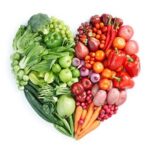Adding fiber to your diet is a common recommendation, but understanding the different types of fiber and their benefits is key to optimizing your health. This guide will explore insoluble fiber, its benefits, and what foods are excellent sources.
Understanding Insoluble Fiber
Dietary fiber, a type of carbohydrate, encompasses the indigestible parts of plant-based foods. Unlike other nutrients that are broken down and absorbed, fiber passes through the digestive system largely intact. There are two main types of fiber: soluble and insoluble.
- Soluble fiber: Dissolves in water, forming a gel-like substance. It helps regulate blood sugar and lower cholesterol.
- Insoluble fiber: Does not dissolve in water. It adds bulk to the stool and promotes movement of material through the digestive system, easing constipation.
Alt Text: A detailed view showcases the texture of wheat bran, emphasizing its role as a dietary source of insoluble fiber.
What Foods Are Insoluble Fiber Powerhouses?
While most plant-based foods contain a mix of both soluble and insoluble fiber, some are particularly rich in the latter. Here’s a breakdown of excellent sources:
- Whole-wheat flour: A staple for many baked goods, whole-wheat flour is a significant source of insoluble fiber.
- Wheat bran: The outer layer of the wheat kernel, wheat bran is incredibly high in insoluble fiber.
- Nuts: Many nuts, including almonds and walnuts, provide a good dose of insoluble fiber.
- Beans: While known for soluble fiber, beans also contain a notable amount of insoluble fiber.
- Vegetables: Certain vegetables, like cauliflower, green beans, and potatoes (especially with the skin on), are good sources.
The Importance of Insoluble Fiber
Insoluble fiber offers a range of health benefits:
- Promotes Regularity: By adding bulk to the stool and facilitating movement through the digestive tract, insoluble fiber can prevent and relieve constipation.
Alt Text: The image focuses on the freshness of green beans, highlighting their visual appeal and connection to insoluble fiber intake.
- Supports Bowel Health: Insoluble fiber may reduce the risk of hemorrhoids and diverticulitis.
Recommended Daily Intake
The National Academy of Medicine recommends the following daily fiber intakes:
- Women (50 years or younger): 25 grams
- Women (older than 50): 21 grams
- Men (50 years or younger): 38 grams
- Men (older than 50): 30 grams
Tips for Increasing Insoluble Fiber Intake
- Choose Whole Grains: Opt for whole-wheat bread, pasta, and cereals. Look for “whole wheat” or “whole grain” as the first ingredient on the label.
- Add Wheat Bran: Sprinkle wheat bran on your cereal, yogurt, or smoothies.
- Eat the Skin: When possible, eat the skin of fruits and vegetables, such as potatoes and apples.
- Include Beans Regularly: Incorporate beans into your meals, such as adding them to salads, soups, or chili.
- Snack on Nuts: A handful of nuts can be a healthy and fiber-rich snack.
Cautions and Considerations
Increasing fiber intake too quickly can lead to gas, bloating, and discomfort. It’s best to gradually increase your fiber intake over a few weeks to allow your digestive system to adjust. Also, drink plenty of water, as fiber absorbs water and helps soften stool.
Conclusion
Understanding “What Foods Are Insoluble Fiber” rich and incorporating them into your diet is a key step toward better digestive health and overall well-being. By focusing on whole grains, nuts, beans, and specific vegetables, you can ensure you’re getting enough of this essential nutrient. Remember to increase your intake gradually and drink plenty of water to reap the full benefits.
